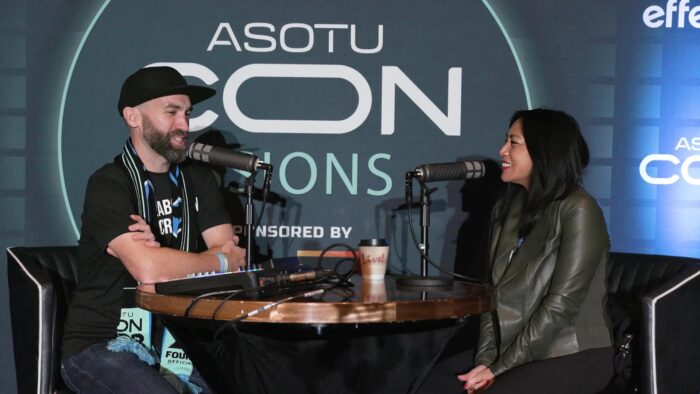I recently attended the Digital Marketing Strategies Conference for the automotive industry in Napa, California. Other than being incredibly excited to connect with fellow marketers in-person for the first time in 16 months, I also was honored to be one of the keynote speakers and I wanted to share some of the key themes I presented at the conference.
As marketers, we are on our own journey, especially in the automotive space, as we consider the unique and compatible value of both content and audience. A shifting privacy landscape, as well as more sophisticated applications of data, have created both challenges and opportunities for reaching target audiences across screens.
The world of TV has evolved, and it has become more digitally-centric both in terms of delivery and marketing tactics. Reflecting back on how far TV has come, I am reminded of an Association of National Advertisers (ANA) conference five years ago when Mark Pritchard, Chief Brand Officer at Procter & Gamble, presented on the impact of digital media on his business. At the time, he said that TV needed to “move up the digital curve.”
Back in 2016, the industry was talking about the possibilities of programmatic video and the promise of addressable TV advertising, but these solutions weren’t yet at the scale or maturity levels for advertisers to have the confidence to invest significantly. His argument was that if TV could start to look and act more like digital, that it would not only align with other digital strategies and the inevitable move towards audience targeting, but also unlock new possibilities in television that didn’t exist at the time.
Since then, the definition of TV has expanded beyond the linear feed piped into the living room. Audiences are using a vast array of devices to access their favorite TV content – a heady combination of over the top (OTT), cable, and satellite TV as well as connected TV devices, tablets, phones, desktops, laptops, apps and browsers – all on their terms.
Device proliferation on top of the content fragmentation has compounded the complexity of today’s automotive marketing and the way in which marketers craft their messaging and position products and services to audiences. There is now greater emphasis on digital tactics and the need for data enablement in TV environments to level the playing field for insights, targeting and measurement.
DIGITAL’S DATA CHALLENGE IS TV’S OPPORTUNITY
With the inevitable demise of the cookie and further privacy-oriented measures to obscure or delete digital signals of consumer behavior online, even the most progressive marketer faces challenges down the road. Identifying and navigating the different datasets and policies of each environment to stitch together audiences across channels will become increasingly difficult. In fact, you could make the argument that what is happening on the TV side is quite the opposite of digital. If anything, data-driven TV is only opening up opportunities for the automotive marketer as the datasets, and the application of them, are now more prolific and advanced.
Data-driven linear TV, audience and affinity group targeting, lookalike modeling—all of the hallmarks of digital advertising—are now part of the TV menu for advertisers to get more granular and efficient while also taking advantage of the scale of TV. Deterministic datasets like set-top box viewing data, merged with first- and third-party datasets that incorporate online and offline buying behavior, suddenly make TV look as sophisticated as its digital alternatives.
Ultimately TV is now a multi-faceted channel that can drive action just as efficiently as the branding vehicle that it always was. Data enables all of this and is now the lifeblood of the advertising ecosystem, just as it has become for most businesses and industries.
THE VALUE OF CONTENT (AND AUDIENCE)
The other interesting aspect of TV becoming more data-enriched and digital media’s data challenge is an enhanced value assigned to content. We know that premium, engaging, brand-safe content is important and where data signals aren’t as prolific, marketers will need to rely more heavily on premium content as a guarantee of quality as well as a proxy for audience.
But we know that buying on just content alone is an outdated and potentially less efficient way to buy media. Overlaying audience on top of premium content delivers the best of all worlds. Combining the data challenge in digital media with the already well-documented issues of fraud, viewability, brand safety issues and questionable measurement practices, there is an increasingly strong gravitational pull to TV and premium video with its more dynamic capabilities.
A recent analysis of Comcast viewership data across 14 billion hours of viewing has provided interesting insights, demonstrating the intersection between content and “audience clusters,” and highlighting viewing consistencies across demographic, psychographic, geographic and purchase variables. We will be sharing these insights in a comprehensive way soon, but what is clear from that analysis is that content can be a great way to reach in-market audiences but without an audience-based strategy, you are leaving plenty of additional opportunities to reach the full universe of potential customers on the table.
When looking at the top three (out of 15) clusters of households that viewed a lot of sports, there was a significantly higher (+39%) likelihood that they were in-market for a new vehicle compared to other households. However, that same group of households only represented 27% of the in-market household audience. So, 73% of the target household audience could remain unreached by a sports content-centric strategy.
A WORTHWHILE JOURNEY
We are all on a journey, as an industry, to find the optimal mix and complementary combination of screens, content and audience, fueled and informed by data. Each automotive advertiser, as well as marketer from any industry, will have their own strategy based on their geography, position and addressable market.
Given the proven connection between audience and content, focusing on content can be a positive tactic to reinforce a message with a particular audience. Specific premium content (like sports) is a great way to match audience to viewing and reinforce a message with a particular audience, but should only serve as one component of an audience-first marketing strategy.
Using data insights to understand viewing patterns and meet the consumer where they are in their own purchase journey with relevant messaging is the holy grail. By making audience central to your advertising strategy, consumers will engage with your brand within their favorite content, on their chosen device, at the right stage of that journey and that will ensure the results you are looking for.




